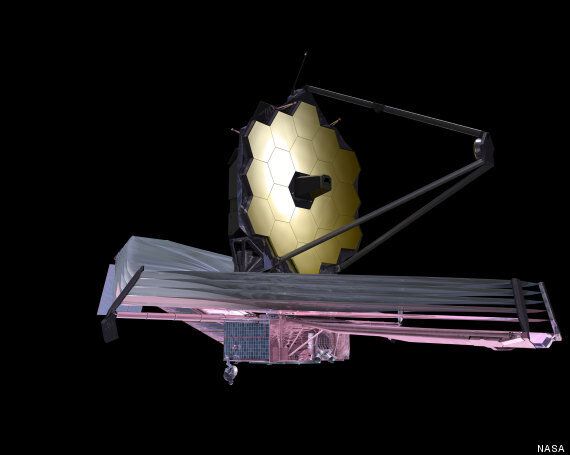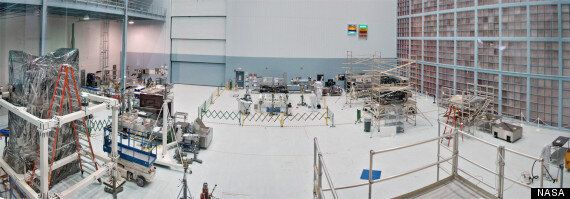Nasa’s James Webb Space Telescope (JWST) will be a giant leap forward for astronomers, allowing them to study the universe in its infancy.
Now the first of four flight instruments for the device – which will launch in 2018 – has been delivered to Nasa’s Goddard Space Flight Center in Greenbelt, Maryland, where it’s being assembled.
Called the Mid-Infrared Instrument (MIRI), it will allow scientists to study cold and distant objects in greater detail than ever before and is one reason why Webb will be the most powerful space telescope ever built.

An artist's impression of The James Webb Space Telescope
"MIRI will enable Webb to distinguish the oldest galaxies from more evolved objects that have undergone several cycles of star birth and death," said Matt Greenhouse, a project scientist at Goddard. "MIRI also will provide a unique window into the birth places of stars which are typically enshrouded by dust that shorter wavelength light cannot penetrate."
The instrument, which was assembled at the Rutherford Appleton Laboratory in Oxfordshire, will observe light with wavelengths in the mid-infrared range of 5 microns to 28 microns, which is a longer wavelength than human eyes can detect.
MIRI's sensitive detectors will allow it to observe light, cool stars in very distant galaxies, unveil newly forming stars within our Milky Way, find signatures of the formation of planets around stars other than our own and take imagery and spectroscopy of planets, comets and the outermost bits of debris in our solar system.

MIRI's sensors will unveil newly formed stars and the signatures of planets
MIRI's images will enable scientists to study an object’s shape and structure.
JWST, the successor to the Hubble telescope, will sit in orbit one million miles from Earth. By comparison, Hubble is a relatively cosy 350 miles away.
Being that far out in space puts JWST beyond hope of repair should it go wrong – but astronomers believe it’s worth the risk.

Spotless: The clean room where the telescope is being assembled
Why? Because at that distance it’s extremely cold, so radiation from the telescope itself, which could interfere with the faint signals it’s analysing, will be kept to a minimum.
Webb's operating temperature is less than 50 degrees above absolute zero: 50 Kelvin (-223C or -370F).
Light from the Earth, Moon and Sun, meanwhile, will be blocked by a giant shield the size of a tennis court.
The telecope will be sitting at a point in orbit called L2, one of only five places in the solar system where these three objects lie in the same direction.